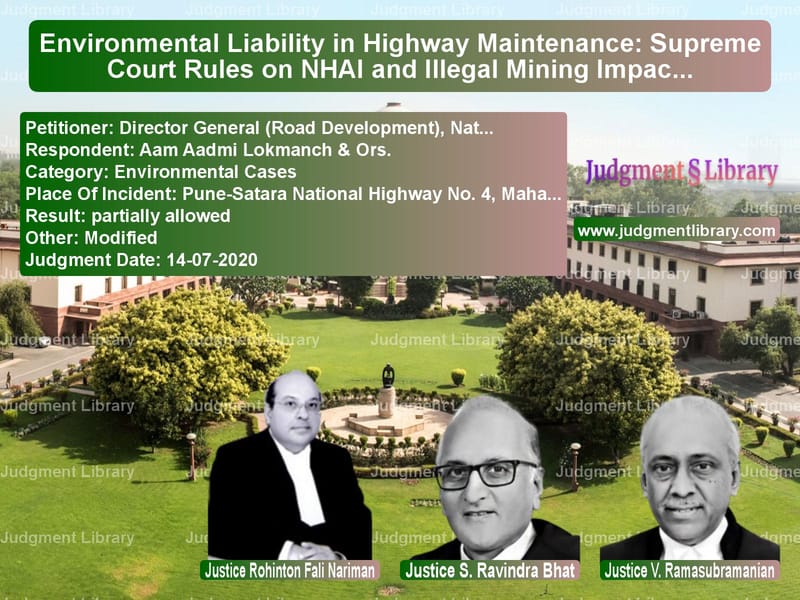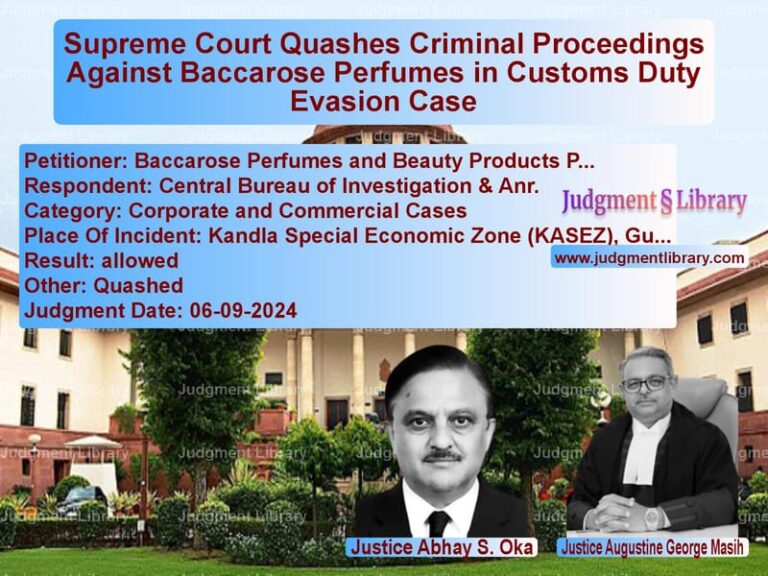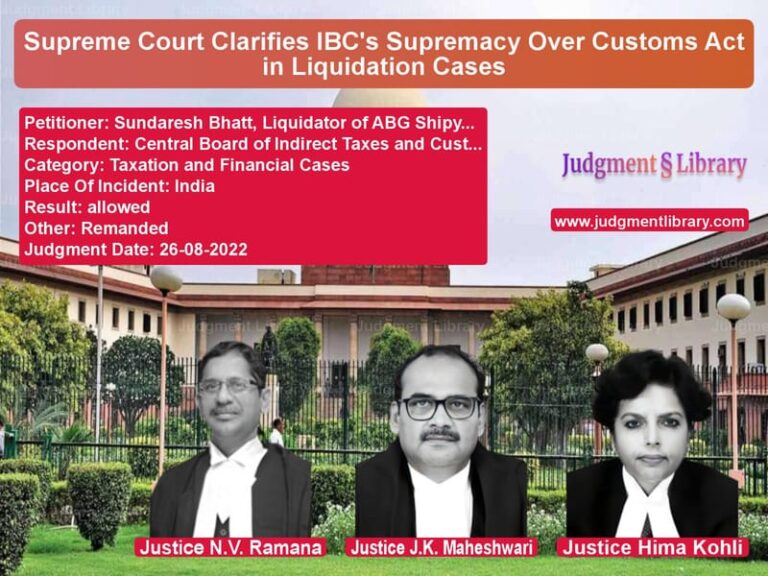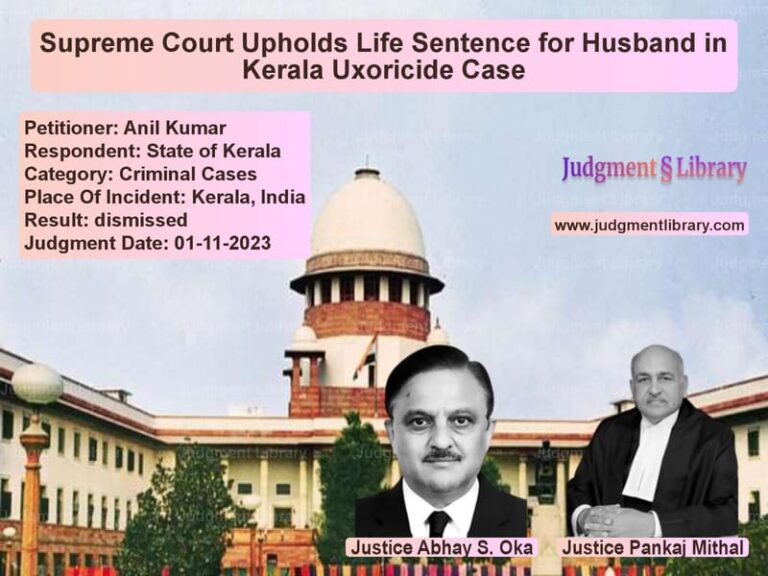Environmental Liability in Highway Maintenance: Supreme Court Rules on NHAI and Illegal Mining Impact
On June 6, 2013, a landslide caused by illegal mining led to the death of two individuals traveling on the Pune-Satara section of National Highway No. 4. This tragic incident sparked legal proceedings questioning the accountability of the National Highways Authority of India (NHAI) and the regulatory framework surrounding environmental compliance in highway construction and maintenance.
The Supreme Court of India, in the case of Director General (Road Development), National Highways Authority of India vs. Aam Aadmi Lokmanch & Ors., ruled on whether NHAI and its contractors could be held responsible for failing to prevent environmental degradation caused by illegal mining near the highway. The ruling examined the balance between infrastructure development and environmental conservation.
Background of the Case
The case arose when a public interest litigation (PIL) was filed by Aam Aadmi Lokmanch, a citizens’ forum advocating for public safety and environmental accountability. The PIL alleged:
- NHAI had failed to prevent illegal mining activities near the highway, which weakened the soil structure, leading to landslides.
- The construction contractors did not implement proper environmental safeguards, despite the Environmental Impact Assessment (EIA) reports mandating such measures.
- The state government did not exercise due diligence in curbing illegal mining activities in the area.
The National Green Tribunal (NGT) initially ruled in favor of the petitioners, imposing heavy penalties on NHAI and the contractors for negligence. However, NHAI challenged this order in the Supreme Court, arguing that they could not be held liable for third-party illegal mining activities.
Arguments of the Petitioner
NHAI and its legal representatives contended:
- The responsibility for preventing illegal mining lies with the state government and the mining authorities, not with the highway construction agency.
- The project had obtained all necessary environmental clearances, and there was no violation of contractual obligations by NHAI.
- The landslide was an unforeseeable natural calamity, and linking it to illegal mining near the highway was speculative.
- The NGT overstepped its jurisdiction by penalizing NHAI without sufficient evidence linking highway maintenance with the incident.
Arguments of the Respondent
Aam Aadmi Lokmanch and other petitioners argued:
- NHAI had an obligation to ensure that road infrastructure projects complied with environmental laws and that preventive measures were taken against foreseeable risks such as illegal mining.
- Despite repeated complaints, no action was taken to prevent soil erosion near the highway.
- The contractor’s negligence in implementing erosion control measures, despite being aware of ongoing illegal mining, contributed to the incident.
- Public safety must take precedence over bureaucratic accountability disputes.
Supreme Court’s Key Findings
1. Scope of NHAI’s Liability
The Supreme Court examined the extent of NHAI’s responsibility in cases where external factors, such as illegal mining, impact public safety. It ruled:
“Infrastructure development cannot be divorced from environmental responsibility. When an agency undertakes a highway project, it must ensure compliance with environmental safeguards even if external factors contribute to potential risks.”
2. State’s Responsibility in Regulating Illegal Mining
The Court emphasized that the state government and mining regulatory authorities are primarily responsible for curbing illegal mining activities. However, it stated:
“A regulatory failure does not absolve infrastructure authorities from taking proactive measures to mitigate foreseeable risks.”
3. Environmental Compliance as a Precondition for Infrastructure Development
The Court cited previous rulings where environmental impact assessments (EIAs) were deemed crucial in preventing environmental hazards. It noted:
“Failure to implement mitigation measures identified in EIA reports constitutes a breach of environmental compliance.”
4. Modified Liability Framework
While acknowledging NHAI’s argument that illegal mining was beyond its control, the Court modified the penalty imposed by NGT. Instead of direct financial liability, NHAI was directed to:
- Set up a dedicated monitoring system to assess environmental risks along highways.
- Collaborate with state governments to identify and mitigate risks arising from illegal activities near highways.
- Ensure that contractors follow erosion control protocols strictly, with independent audits on compliance.
Final Judgment
The Supreme Court:
- Partially allowed NHAI’s appeal, reducing the direct financial penalty.
- Upheld the core finding that NHAI had an environmental responsibility in infrastructure projects.
- Directed NHAI to implement additional safety measures on vulnerable highway sections.
- Ordered state governments to submit reports on actions taken to prevent illegal mining near highways.
Key Takeaways from the Judgment
- Infrastructure projects must integrate environmental safeguards as part of their operational framework.
- State governments are responsible for preventing illegal mining but must coordinate with infrastructure agencies to mitigate risks.
- Judicial intervention plays a crucial role in enforcing environmental liability even in indirect cases.
- Public safety and environmental conservation are paramount in highway development projects.
Conclusion
The Supreme Court’s ruling in Director General (Road Development), National Highways Authority of India vs. Aam Aadmi Lokmanch & Ors. reinforces the principle that infrastructure agencies cannot ignore environmental compliance even if external factors contribute to public safety risks. The modified penalty framework ensures accountability while balancing the practical challenges of infrastructure governance. The judgment sets a precedent for future cases involving environmental responsibility in large-scale infrastructure projects.
Petitioner Name: Director General (Road Development), National Highways Authority of India.Respondent Name: Aam Aadmi Lokmanch & Ors..Judgment By: Justice Rohinton Fali Nariman, Justice S. Ravindra Bhat, Justice V. Ramasubramanian.Place Of Incident: Pune-Satara National Highway No. 4, Maharashtra.Judgment Date: 14-07-2020.
Don’t miss out on the full details! Download the complete judgment in PDF format below and gain valuable insights instantly!
Download Judgment: Director General (Ro vs Aam Aadmi Lokmanch & Supreme Court of India Judgment Dated 14-07-2020.pdf
Direct Downlaod Judgment: Direct downlaod this Judgment
See all petitions in Environmental Cases
See all petitions in Compensation Disputes
See all petitions in Negligence Claims
See all petitions in Public Interest Litigation
See all petitions in Judgment by Rohinton Fali Nariman
See all petitions in Judgment by S Ravindra Bhat
See all petitions in Judgment by V. Ramasubramanian
See all petitions in partially allowed
See all petitions in Modified
See all petitions in supreme court of India judgments July 2020
See all petitions in 2020 judgments
See all posts in Environmental Cases Category
See all allowed petitions in Environmental Cases Category
See all Dismissed petitions in Environmental Cases Category
See all partially allowed petitions in Environmental Cases Category







